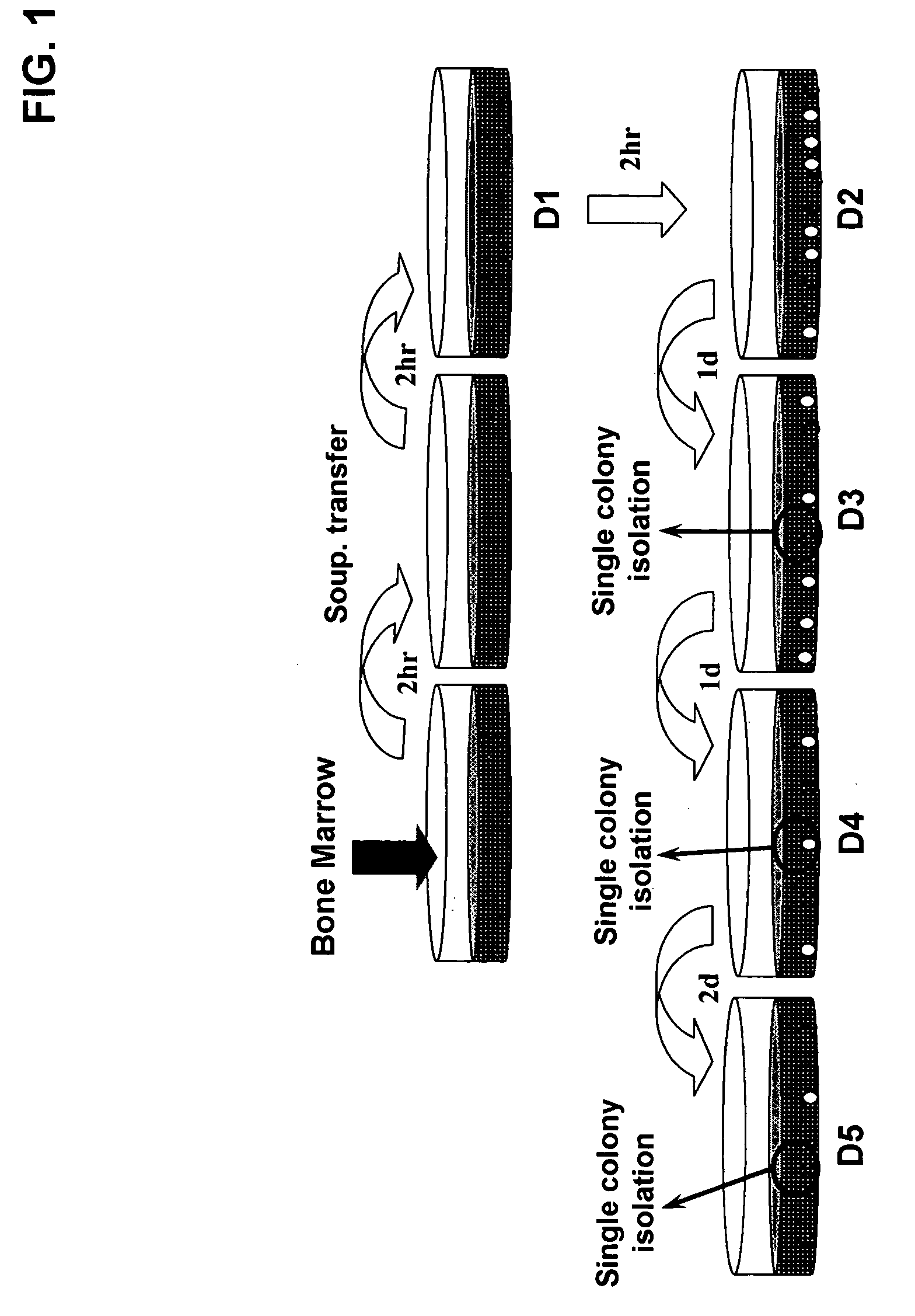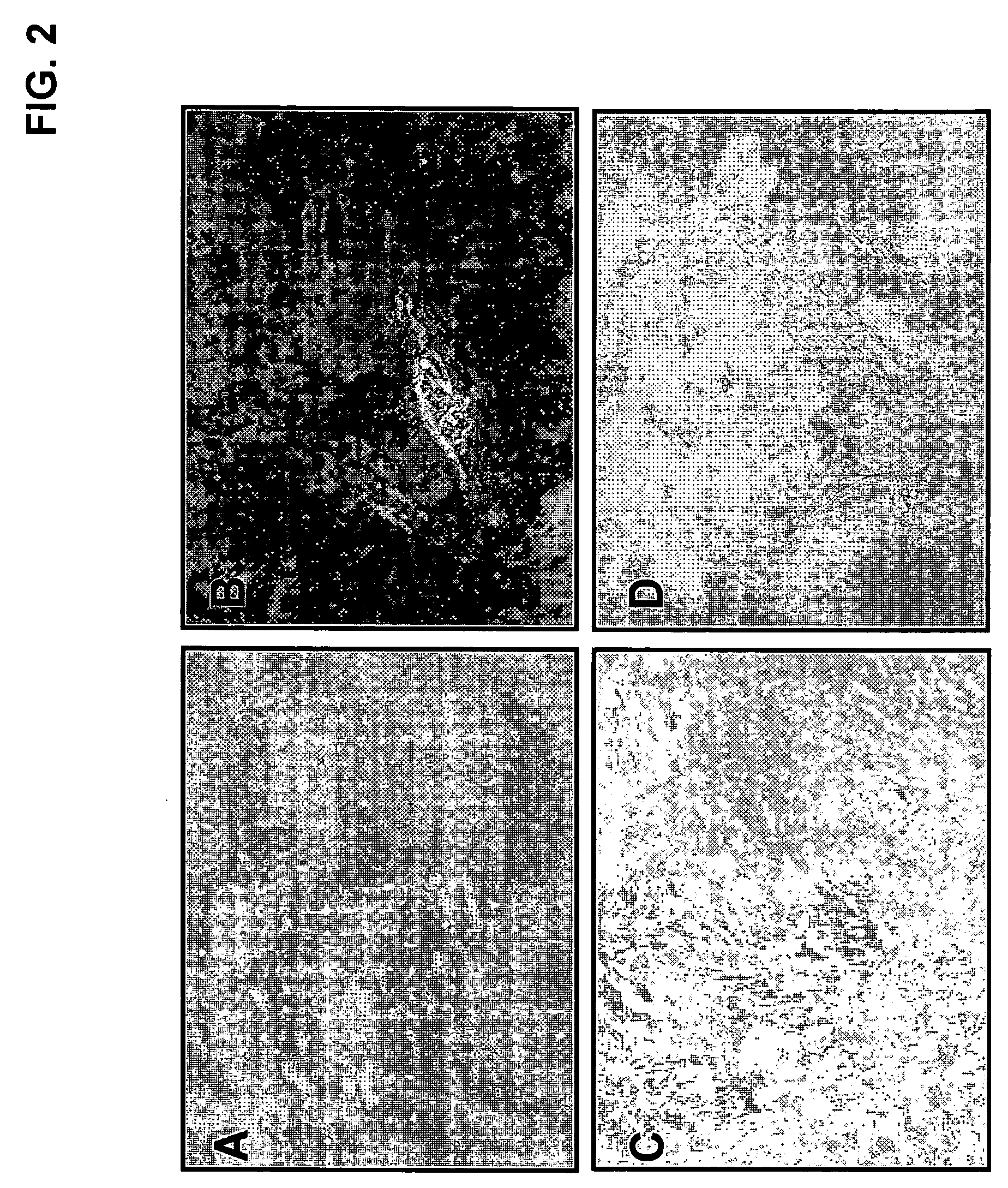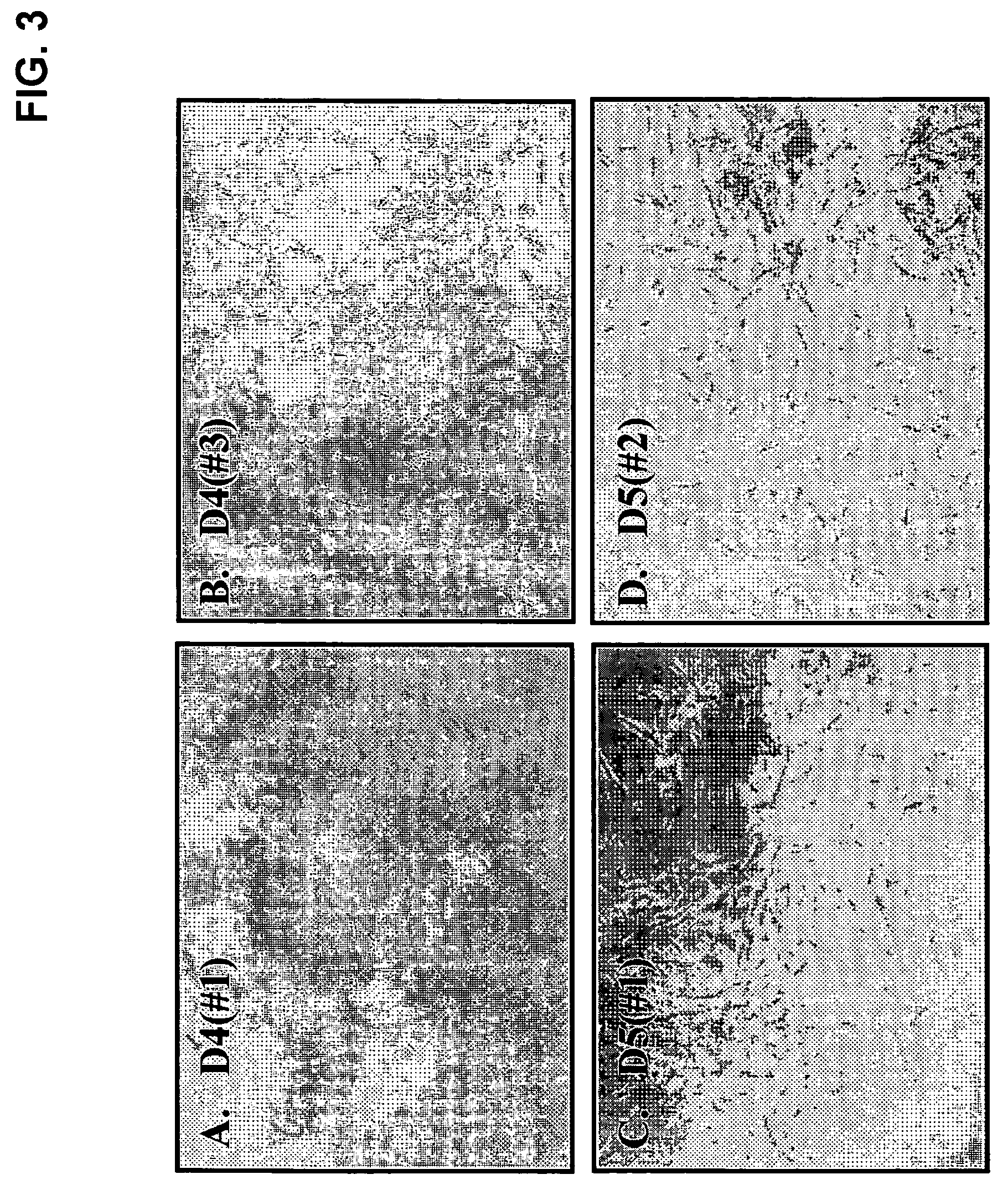Isolation of multi-lineage stem cells
a stem cell and multi-lineage technology, applied in the field of cell isolation, can solve the problems of high production cost, difficult identification, heterogeneity of cultured cells,
- Summary
- Abstract
- Description
- Claims
- Application Information
AI Technical Summary
Problems solved by technology
Method used
Image
Examples
example 1
Isolation of MLSCs and Cell Culture
[0060] One-ml of discarded human bone marrow aspirate, taken from the iliac crest of a patient undergoing bone marrow examination after informed consent and approval of the Inha University Medical School IRB, were mixed with 15 ml of complete growth medium: Dulbecco's modified Eagle's Medium (DMEM) containing high or low glucose (GIBCO-BRL, Life-technologies, MD USA), with 20% fetal bovine serum (FBS) and 1% penicillin / streptomycin, and then incubated in 100 mm culture dish. As shown in FIG. 1, after 2 hour incubation at 37° C., 5% CO2, only the cell culture supernatant was transferred to a new dish. After another 2 hour incubation in a new dish, the supernatant was transferred to a non-coated, collagen or polylysine-coated dish and incubated for 2 hours (D1). After transferring the supernatant one more time to a new dish (D2), the supernatant was transferred to a new dish and then incubated for 1 day (D3). This was repeated two more times with 1 ...
example 2
Flow Cytometry Analysis
[0061] The isolated and expanded cells from single-cell derived colonies were characterized at passage 3 or 4 by flow cytometric analysis for a panel of cell surface proteins. The cells were harvested from 75 cm2 flask by treatment of trypsin / EDTA and washed with PBS twice. The cells were incubated in PBS with 0.1% goat serum for blocking and then washed with washing buffer (PBS with 0.4% BSA) twice. The cells were incubated with fluorescein isothiocyanate (FITC) or phycoerythrin (PE)-conjugated antibodies for 40 min at 4° C. Tested antigens included matrix receptors (CD13, CD44, CD105), integrin (CD29), PECAM (CD31), ALCAM (CD166), SH3 and SH4 (CD73), Thy-1 (CD90) and hematopoietic lineage markers (CD34, HLA-DR, HLA-ClassI) (BD Biosciences Pharmingen, San Diego, Calif., USA). The cell mixture was then washed twice with washing buffer and analyzed using a fluorescence-activated cell sorter (FACS) with a 525 nm filter for green FITC fluorescence and with a 575...
example 3
Induction of Multi-Lineage Differentiation
[0062] Pellet culture assay was used for chondrogenic, osteogenic, adipogenic differentiation experiments using passage 3 or 4 cells. 2×105 cells in 0.5 ml culture medium were spun down to make a pellet. The following supplements in DMEM containing high glucose and 20% FBS were used for each lineage, chondrogenic differentiation medium: 6.25 μg / ml insulin (Sigma Chemical Co, St Louis, Mo., USA), transferrin (Sigma), 6.25 ng / ml selenous acid (Sigma), 1.25 mg / ml BSA (Sigma), 5.35 μg / ml linoleic acid (Sigma), TGF-β1 10 ng / ml (R&D Systems, Minneapolis, Minn., USA), and TGF-β3 10 ng / ml (R&D Systems, Minneapolis, Minn., USA); osteogenic differentiation medium: 50 μg / ml ascorbate 2-phosphate (Sigma), 10−8 M dexamethasone (Sigma), and 10 mM β-glycerophosphate (Sigma); adipogenic differentiation medium: 50 μg / ml ascorbate 2-phosphate (Sigma), 10−7 M dexamethasone (Sigma), and 50 μg / ml indomethacine (Sigma). The pellet culture was incubated at 37° C....
PUM
| Property | Measurement | Unit |
|---|---|---|
| time | aaaaa | aaaaa |
| density | aaaaa | aaaaa |
| cell adhesive | aaaaa | aaaaa |
Abstract
Description
Claims
Application Information
 Login to View More
Login to View More - R&D
- Intellectual Property
- Life Sciences
- Materials
- Tech Scout
- Unparalleled Data Quality
- Higher Quality Content
- 60% Fewer Hallucinations
Browse by: Latest US Patents, China's latest patents, Technical Efficacy Thesaurus, Application Domain, Technology Topic, Popular Technical Reports.
© 2025 PatSnap. All rights reserved.Legal|Privacy policy|Modern Slavery Act Transparency Statement|Sitemap|About US| Contact US: help@patsnap.com



